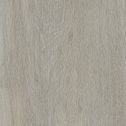How Do You Layer Textures in a Room
Are you tired of flat, one-dimensional spaces that lack personality and pizazz? If so, it's time to learn the art of texture layering. That's right, gone are the days of dull, monotone rooms. Instead, by strategically layering different textures, you can create a visually dynamic and eye-catching space that's sure to impress. But where to start, you ask? Don't worry; we've got you covered.
In this blog, we'll teach you everything you need to know about how to layer textures in a room like a pro. From choosing the right textures to mixing and matching different textures, we've got all the tips and tricks you need to take your space from bland to grand. So grab your design toolkit and transform your room into a texture-filled masterpiece.
How Do You Layer Textures in a Room
Choosing the Right Textures
Before you start layering textures in a room, it's essential to have a clear idea of the overall aesthetic you're going for. Different textures can convey different moods and styles, so choosing textures that align with your desired look and feel is important. Some common textures to consider include:
Smooth and glossy: Glass, metal, and other smooth and glossy surfaces can add a modern and sophisticated touch to a room.
Matte and natural: Wood, stone, and other matte and natural materials can add warmth and texture to a space.
Soft and plush: Fabric, carpet, and other soft and plush textures can add a cosy and comfortable feel to a room.
Rough and rustic: Brick, concrete, and other rough and rustic textures can add a raw and industrial vibe to a space.
When choosing textures, it's also important to consider the size and scale of the room. In smaller rooms, it can be helpful to stick to a limited number of textures to avoid overwhelming the space. In larger rooms, you can layer multiple textures in larger rooms and create a more complex and dynamic look.
Mixing and Matching Different Textures
Once you have a sense of the textures you want to use in a room, it's time to start mixing and matching them to create a cohesive and balanced look. Here are a few tips for mixing and matching textures:
Use a neutral base
A neutral base, such as a light-coloured paint or a neutral-coloured tile, can help anchor the room and provide a blank canvas for layering different textures.
Create a visual flow
To create a cohesive look, it's important to consider how different textures relate to one another and create an optical flow throughout the room. This might mean using similar textures in adjacent spaces, such as using the same type of wood flooring in the living room and dining room or using different shades of the same colour to create a cohesive look.
Mix and match in small doses
Mix and match textures in small doses rather than trying to layer too many different textures simultaneously. This can help create a balanced and harmonious look rather than an overwhelming and cluttered one.
Use texture as an accent
If you need help mixing and matching different textures, one approach is to use texture as an accent rather than trying to layer it throughout the entire space. For example, this might mean adding a textured area rug to a room with smooth flooring or adding a textured throw pillow to a room with smooth upholstery.
Using Texture to Draw the Eye and Create Focal Points
In addition to adding depth and interest to a room, layering textures can also draw the eye and create focal points. Here are a few ways to use texture to create visual interest in a room:
Use texture to highlight key features
If you have a striking architectural feature, such as a fireplace or a built-in bookshelf, you can use texture to highlight and draw attention to it. For example, you might use a rough, textured tile or stone around the fireplace to make it stand out, or add a plush, textured area rug in front of a built-in bookshelf to create a cosy reading nook.
Use texture to create contrast
Contrasting textures can create visual interest and draw the eye. For example, you might pair a smooth, glossy tile with a rough, rustic stone or mix a plush velvet sofa with a smooth, shiny coffee table.
Use texture to add depth
Layering different textures in a room can also add depth and dimension, making the space more dynamic and three-dimensional. For example, you might combine smooth and rough textures on the walls or a plush carpet with a smooth, shiny wood floor.
In conclusion, layering textures in a room can add depth, interest, and a cohesive look to your space. By choosing the right textures, mixing and matching different textures in a balanced way, and using texture to create focal points and draw the eye, you can create a visually appealing and dynamic room that feels warm and welcoming.

